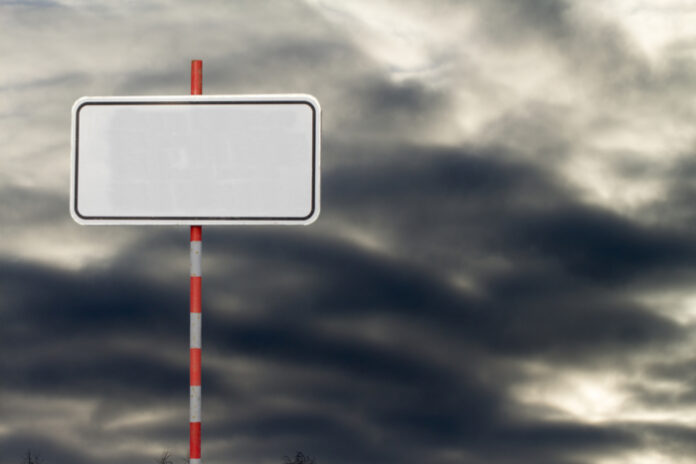Wayfinding plays a crucial role in guiding people through both public and private environments. Effective wayfinding systems ensure individuals can navigate spaces easily and safely without confusion. In public spaces like airports, hospitals, and city centers, crafting effective wayfinding signs help decrease the time spent navigating, enhancing overall user satisfaction and accessibility. Similarly, in private spaces such as corporate campuses or large retail stores, these signs contribute to a seamless visitor experience by directing traffic efficiently and reducing potential stress caused by disorientation.
Modern Wayfinding Signage
Contemporary Designs
These signs are not only functional but are also crafted to complement the architectural features of their surroundings. Contemporary signs often use bold colors and unique shapes to capture attention quickly and effectively. This approach helps reduce the cognitive load on visitors as they navigate through spaces. The use of high-contrast visuals and legible typography ensures that the information is easily accessible to all, including those with visual impairments.
Advanced Materials
Crafting effective wayfinding signs are made from a variety of materials including tempered glass, brushed aluminum, and high-grade plastics that offer longevity and resistance to environmental factors. These materials not only stand up to the wear and tear of high-traffic areas but also maintain their aesthetic quality over time. Innovations in material science have allowed for the creation of stylish and sustainable signs, meeting the needs of eco-conscious organizations.
Integration of Technology
Digital wayfinding signage represents a significant advancement in the field, incorporating real-time updates and interactive features that traditional signs cannot offer. These digital displays can provide directions, important notifications, and even language translation services, enhancing the user experience significantly. Integrating touchscreens, QR codes, and NFC technology allows visitors to interact with the signage directly, obtaining personalized directions or information instantly.
Custom and Personalized Directional Signs
Reflecting Brand Identity
Custom directional signs are designed to harmonize with a company’s branding elements, such as logos, color schemes, and fonts. This customization ensures that every aspect of the signage reflects the brand’s personality and values, creating a consistent and immersive brand experience. By incorporating bespoke designs, organizations can make a lasting impression on visitors, reinforcing their brand identity throughout their premises.
Design Considerations for Custom Signs
When developing personalized directional signs, it’s crucial to consider several key factors to ensure their effectiveness and appeal. The design process should focus on readability, location-specific requirements, and the overall aesthetic harmony with the site’s architecture. Designers must balance creativity with functionality, choosing fonts and colors that are easy to read from various distances and angles.
Personalized Wayfinding Solutions
For instance, a boutique hotel might use elegantly crafted wooden signs that reflect its rustic charm and provide clear guidance to guests. Another example could be a hospital using color-coded pathways on the floors, which correspond to specific departments, making it intuitive for patients and visitors to find their way around without feeling overwhelmed. These tailored solutions cater directly to the unique layout and aesthetic of each location, improving the wayfinding experience significantly.
Exterior Directional Signage
Importance of Weather-Resistant Materials
The durability of exterior directional signage is critical as these signs must withstand various environmental challenges including harsh weather, UV radiation, and physical wear from pollutants. Materials such as high-density urethane, aluminum, and treated wood are commonly used because they resist corrosion, fading, and other damage caused by outdoor elements. Selecting the right materials ensures that the signage remains functional and visually appealing for a long time.
Maintenance and Longevity of Exterior Signs
To ensure the longevity and effectiveness of outdoor wayfinding signage, regular maintenance is essential. Here’s how regular upkeep can significantly extend the life of these important navigational aids:
- Cleaning: Regularly clean the signs to remove dirt, grime, and pollutants that can obscure text and graphics.
- Inspection: Conduct periodic inspections to check for damage such as cracks, fading, or vandalism and address these issues promptly.
- Updating: Update signage as needed to reflect changes in the environment, such as new buildings or altered paths, to prevent navigation confusion.
- Protective Coatings: Apply protective coatings to shield signs from UV light and harsh weather, preserving their color and structural integrity.
- Secure Mounting: Check and reinforce mounting hardware to ensure signs remain securely in place, especially in high-wind areas.
In addition to these steps, it’s beneficial to design signs with modularity in mind, allowing for easy replacement of parts rather than the entire structure. A comprehensive maintenance strategy not only prolongs the life of the signage but also ensures it remains a reliable guide for users.
Contributions of Wayfinding Signage Companies
Tailored Services for Specific Needs
Wayfinding signage companies specialize in creating bespoke signage solutions that cater to the specific requirements of their clients. Whether for corporate campuses, healthcare facilities, or educational institutions, these companies employ a consultative approach to crafting effective wayfinding signs that not only guide users effectively but also enhance the visual appeal of the space.
Innovations in Wayfinding Solutions
These innovations may include the development of digital wayfinding signage systems that integrate with mobile apps, the use of sustainable materials to reduce environmental impact, and the implementation of interactive elements that engage users and provide real-time information. By pushing the boundaries of traditional signage, these companies are transforming how individuals interact with their surroundings in an increasingly digital world.
Collaboration Process with Signage Experts
Collaborating with wayfinding signage experts involves a detailed and structured process to ensure that the final products meet all specifications and are effective in their environment. Here are typical steps in this collaboration:
- Needs Assessment: Initial discussions to understand the client’s needs, challenges, and objectives for the signage system.
- Site Evaluation: Experts visit the site to analyze the space, identifying key points for sign placement and the types of signs required.
- Design Proposal: Based on the assessment and evaluation, a custom design proposal is created, including mock-ups and material suggestions.
- Feedback and Revision: The client reviews the proposal and provides feedback. Adjustments are made until the designs meet the client’s expectations.
- Manufacturing and Installation: Once the design is approved, production begins, followed by professional installation to ensure optimal placement and visibility.
This collaborative process ensures that every aspect of the wayfinding system is tailored to the client’s specific needs, resulting in a highly effective and cohesive navigational aid. By working closely with experts, clients benefit from industry insights and best practices, ensuring their signage is both innovative and practical.
Interior Wayfinding Signage
Sign Placement and Visibility
The placement and visibility of signs within an interior environment are critical to their effectiveness. Signs must be visible from multiple angles and distances, with consideration given to various lighting conditions and architectural elements that could obscure the view. Interior wayfinding signage should be located at eye level and in consistent locations throughout the facility to prevent navigational errors. Additionally, these signs often use large, clear fonts and symbols that quickly communicate information to people on the move.
Enhancing User Experience within Buildings
By reducing the anxiety associated with navigating unfamiliar environments, well-designed signage can make spaces more welcoming and accessible. This is particularly important in complex settings like hospitals or large office buildings, where stress levels can be high. Effective signage systems can contribute to a more positive interaction with the space, encouraging visitors to return and helping employees feel more comfortable and productive.
This exploration into wayfinding signage underscores the necessity of thoughtful design, robust materials, and ongoing maintenance to create systems that are both informative and inviting. Crafting effective wayfinding signs not only guides but also enhances the environment, making spaces more accessible and easier to navigate for everyone. As technology advances, so too will the possibilities for innovative wayfinding solutions, promising a future where digital and physical navigation aids coexist to provide a smoother, more intuitive user experience.
Find a Home-Based Business to Start-Up >>> Hundreds of Business Listings.















































